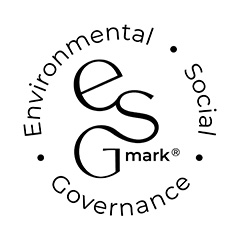Tax Compliance
Complete tax compliance in a complex environment
Whether you’re an individual, sole trader, or corporate entity, navigating the complexities of tax compliance can be challenging and affect the decisions you make every day.
Our team of tax compliance experts provide comprehensive tax compliance and advisory services,helping you move forward with total confidence and clarity.
Business or personal, we have you covered
We are committed to making your tax compliance obligations and relationship with HM Revenue & Customs as stress-free as possible.
Our tax compliance experts help you understand all tax implications, create the most tax-efficient structure for you and your business and take care of your tax returns to meet your deadlines
Reassurance for total peace of mind
The tax system is complex and broad.
Whether it’s income tax, capital gains tax, inheritance tax or VAT, our tax specialists are authorities in their field and can advise and support you on all areas of tax, as well as managing your relationship with HM Revenue & Customs.
Comprehensive services to support you
We offer bespoke tax advice and support for complex tax returns, reviewing your tax affairs and structure to ensure that you are not paying more tax than you have to. Our specialist tax advisers can complete your tax return to satisfy HM Revenue & Customs requirements and other tax compliance matters.
As part of our overall tax compliance service, our dedicated specialists can support you with the preparation of estates tax returns, or dealing with estate informally with HM Revenue & Customs depending on its size. If required, we can also take care of the estate’s registration with HMRC on your behalf.
In addition, we can deal with the preparation of full estate accounts and, if distributions have been made, completion of the R185s for the beneficiaries.
The regulations surrounding Value Added Tax can be complex. Our in-house VAT specialists provide dedicated support to sole traders, partnerships, limited companies, unincorporated entities and LLPs on everything relating to VAT.
We can help you establish whether you need to be VAT registered, complete and submit VAT returns on your behalf, and provide consultancy services that allow you to maximise your VAT recoveries while minimising VAT due.
In addition, we can give you or your company a thorough VAT health check and provide training for your staff in all areas of VAT. We also can assist with visits from HM Revenue & Customs and seek agreements or rulings from the Commissioners of HMRC.
As members of the MGI Worldwide network, we can put businesses in touch with advisers outside of the UK to assist with tax and VAT with regards to trading in other countries.
Corporation Tax return compliance can be burdensome. We relieve you of this burden by overseeing and completing the relevant compliance on your behalf.
We do this by preparing your corporation tax return together with supporting computations, as well as keeping you updated and well-informed on corporate tax self-assessment. We ensure the relevant electronic tagging of your accounts is completed to ensure your limited company complies with mandatory electronic return filing with HM Revenue & Customs.
HM Revenue & Customs regularly carry out checks and enquiries into individuals’ tax affairs each year to ensure that the correct amount of tax is being paid through Self-Assessment. This is often a long and arduous process involving various correspondences with an Inspector of Taxes at HMRC, who may not always agree with the treatment of certain items in a person’s tax return. They may at times insist that more tax should be due based on their interpretation of legislation.
We support you through this challenging process by ensuring HMRC has the legal right to make these enquiries, and argue your side where they disagree with your tax treatment to make sure you aren’t paying any more tax than you should be. By liaising with HMRC directly, we relieve any stress a tax compliance enquiry can cause and bring yours to a swift end.
Tax Fee Protection Insurance
If you are ever faced with an HMRC enquiry, the time and work involved in dealing with this can be substantial, with resulting fees running into thousands of pounds.
We help you avoid these potential difficulties through our Tax Investigation Policy, which covers the costs of defending you in the event of a tax enquiry by HMRC. Our experienced team will work hard to defend you during this enquiry, ensuring the potentially high costs of professional fees are covered by the policy.
In addition, this will remove any concerns about professional fees, meaning you will not need to accept unreasonable tax charges by HMRC. You’ll also receive free access to a 24/7 business legal helpline to alleviate any worries you may have.
An Annual Tax on Enveloped Dwellings (ATED) return must be submitted to HM Revenue & Customs where a company owns UK residential property worth £500,000 or more. The valuation date for returns for the current financial year is 1 April 2017, or the purchase date if later, with the next valuation reassessment date being 1 April 2022 and every 5 years thereafter.
An ATED charge is payable unless a relief can be claimed – these most commonly apply to property developers, rental businesses and working farmhouses, provided certain conditions are met. To secure a relief, an ATED relief form must be submitted to HMRC by the filing and payment deadline of 30 April, or within 30 days of purchase if sooner.
Our tax specialists can advise on what reliefs are available to you, submit ATED returns and relief forms on your behalf, advise you of your payment details and liaise directly with HMRC where necessary.
Since 6 April 2015, non-UK residents who dispose of UK residential property have been required to file a Non-Resident Capital Gains Tax Return (NRCGT Return) within 30 days of the conveyance. This requirement has been extended to non-residential UK property for disposals that take place after 6 April 2019.
Our dedicated team can assist with calculating whether the re-basing, time apportionment or retrospective tax calculation methods should be elected for, and submit the NRCGT Return to HM Revenue & Customs on your behalf.
Our dedicated VAT specialists can undertake thorough VAT health checks to examine the VAT treatments and structures of your entity. This usually includes:
· VAT treatment of income (including a review of the paperwork to support such treatment if applicable)
· Your entitlement to recover VAT on expenses
· Whether there are business/non-business or partial exemption issues
· What opportunities or risks arise
We also look to future intentions and how the relevant VAT regulations would impact on your entity’s finances.
Meanwhile, our Payroll team work alongside you to provide a flexible review of the payroll function within your business, which may include a PAYE Health Check. We identify any potential weaknesses and areas of improvement for your company in this area, as well as exposure through non-compliance with HM Revenue & Customs requirements. We agree the scope of work with you in advance and examine the various aspects as appropriate, including associated HR and accounts procedures / policies.
Our tax services have assisted many individuals and organisations to claim helpful reliefs using a variety of government incentives, including Research and Development (R&D), Enterprise Investment Schemes (EIS) and Seed Enterprise Investment Schemes (SEIS). Our vast experience in advising and structuring these and other tax reliefs helps ensure you receive the maximum amount of relief you’re entitled to.
In addition, we can advise you on a range of tax-efficient Employee Incentive Schemes, and assist in putting these in place, including Enterprise Management Incentive (EMI) Share Schemes. These help you attract and retain key staff to support the growth of your company, as well as support your plans for business succession.
We were building contractors, a traditional family firm, that moved on to house developments. We are now also involved in farming and the gravel/waste industry. Fortunately as the focus of our business changed, Rickard Luckin changed with us.















